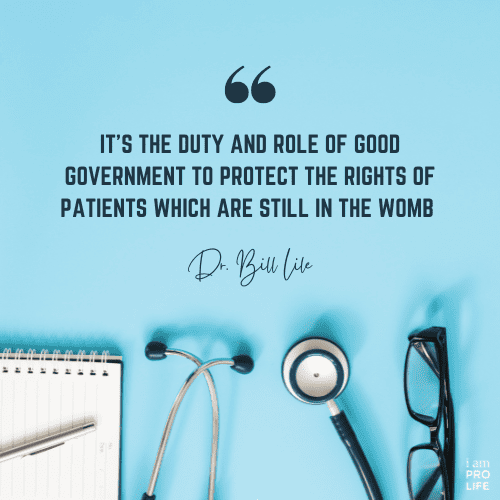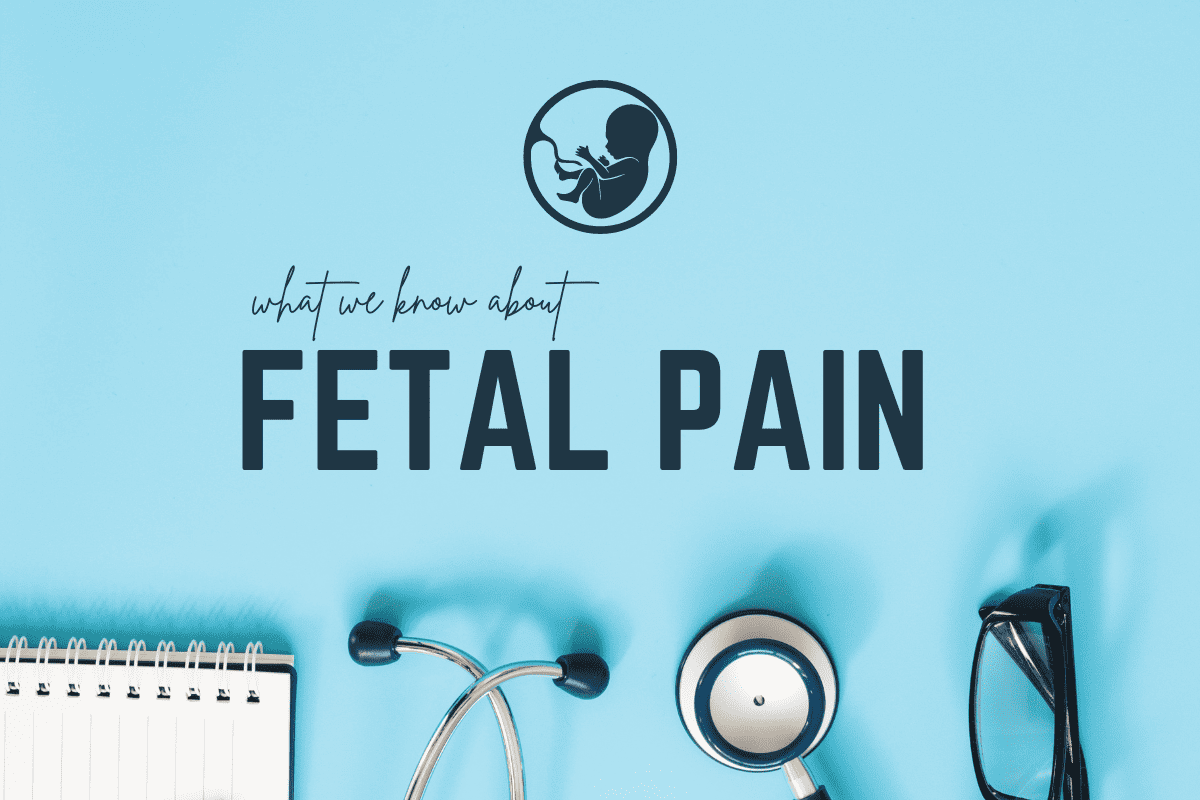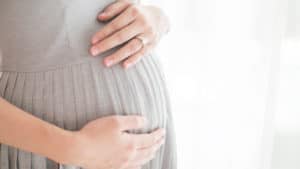For some, justifying abortion depends on one question: When can a fetus feel pain?
The argument comes packaged like this:
If abortion was not painful for a preborn baby, it could be a more compassionate choice given certain circumstances. For example, imagine being given the diagnosis that your preborn baby has Osteogenesis imperfecta (brittle bone disease). Your baby’s bones could break with every little in-utero movement. If there was no chance of them living outside of the womb anyway, wouldn’t it be merciful to end their life before they could feel that pain? Furthermore, if a preborn baby can’t even perceive being aborted, why should we care about its involvement in the abortion decision?
When Can A Fetus Feel Pain?
In years prior, the age at which the medical community was sure a baby could feel pain was at 18 weeks. However, researchers now believe a fetus can feel pain as early as 15 weeks. Further data suggest that some preborns could experience pain as early as 12 weeks.
This age falls within the gestational age where most abortions occur. According to the CDC, “The majority of abortions in 2019 took place early in gestation: 92.7% of abortions were performed at ≤13 weeks’ gestation; a smaller number of abortions (6.2%) were performed at 14–20 weeks’ gestation, and even fewer (<1.0%) were performed at ≥21 weeks’ gestation.”
The Pro-life Doc, Dr. Bill Lile, explains the rights of preborn patients.
How Do We Know When A Fetus Can Feel Pain?
Over the past few decades, several studies have helped shed light on what a preborn child can experience throughout different stages of pregnancy. According to various studies conducted on preborn babies, a fetus can:
- respond to physical stimuli (i.e., the presence of a foreign object inserted into the womb)
- show physical responses to the sound of their parent’s voice
- carry the impact of in-utero trauma long after their birth
- convey their food preferences via facial expression
These studies are eye-opening, miraculous and heartstopping. And they serve as a reminder that many abortion decisions come marketed alongside misinformation. Until now, how many women entered an abortion clinic under the false impression that no one would be “harmed” in the process and that abortion rids the world of a little “pregnancy tissue” rather than a living human being?
Adverse Diagnosis and Fetal Pain
Learning of these discoveries gives a deeper understanding to the idea that we are “fearfully and wonderfully made,” shared in Psalm 139:14. However, let’s return to our argument for the baby with brittle bone disease. Can abortion be an act of love or mercy? And what about preborn babies younger than twelve weeks who may feel nothing during an abortion procedure?
When arguing in favor of abortion, we tend to forget the goal of the procedure — to end a life. Abortion is only successful when a woman leaves an abortion clinic with one less living child than she had when she arrived. Adverse diagnosis and fetal pain would make good markers for justifying abortion if not for two irrevocable truths:
- Diagnosis does not revoke inherent human rights
- Pain tolerance does not excuse injustice
To make matters worse, the percentage of pregnancies that end up misdiagnosed via genetic testing is astonishing.
What This Means For Women's Healthcare
For decades, abortions have been justified with the concept that early preborn children were equivalent to tissue. The preborn child was compared to a random bundle of cells, unfeeling and unnecessary. Under this theory, removing that child has less impact on the woman than removing a kidney or gallbladder. After all, preborn babies deemed “pregnancy tissue” do even less to serve a woman as her kidney might, right?
Pregnancy Loss and the Impact on Women
Perhaps, a baby needs his mother more than she needs him (physically speaking), but no matter how loud our culture chants “abortion is safe!” or claims the procedure has minimal impact on women’s bodies, science suggests otherwise.
Consider miscarriage, a form of pregnancy loss, substantially less invasive than an abortion. According to the National Library of Medicine:
"Nearly 20% of women who experience a miscarriage become symptomatic for depression and/or anxiety; in a majority of those affected, symptoms persist for 1 to 3 years, impacting quality of life and subsequent pregnancies. Women at highest risk for psychiatric morbidity following miscarriage include those who are younger, Hispanic, or of lower socioeconomic status and those with loss of a planned pregnancy, a history of infertility or prior miscarriages, and poor social support or coping skills. Clinicians should screen women frequently for depressive symptoms beginning at 6 weeks following a miscarriage and may facilitate the assessment by utilizing the Patient Health Questionnaire-2; those experiencing clinically significant symptoms beyond 2 months after a miscarriage should undergo formal mental health evaluation and treatment."
National Library of Medicine

Related Articles on Fetal Pain
If early miscarriage can create these health concerns for women, how much more trauma could occur from an unnatural and invasive procedure like abortion?
Fetal Pain and the Weight of Being "Unwanted"
But wouldn’t a woman feel more grief over a “wanted” and miscarried baby than an “unwanted” aborted baby? Couldn’t that account for the difference in reporting negative aftereffects?
The argument that an aborted baby is “unwanted” and therefore their life less impacted than a “wanted” baby only makes sense if we entirely ignore both the biological truths about women’s bodies and the reasons why women seek abortions in the first place. While a woman may choose to end her pregnancy, her body doesn’t categorize the trauma of pregnancy loss as wanted or unwanted. A sudden halt in the natural process of pregnancy has repercussions, as it should. After all, a life was lost.
And let’s not forget that most babies lost to abortion are not aborted because they are unwanted. Contrary to popular belief, most abortions occur for reasons like:
- Education or work (76 percent)
- Financial concern (73 percent)
- Fear of single motherhood (48 percent)
Eradicating Abortion
Thankfully, we can meet the root causes of abortion with alternatives that don’t take a child’s life. Abortion could be nearly eradicated by providing women with basic forms of support. Something as simple as an at-home job opportunity, maternity leave or a church support group could save thousands of lives.
These findings remind us that abortion has become a poor excuse not to provide proper healthcare to pregnant women and their preborn babies. Science may be ever-evolving, but the value of human life will always be unquantifiably valuable. The options given to women in the circumstances driving abortion decisions should reflect the value and impact that an abortion decision has on both a woman and her child.




















